5 Common Dog Food Myths You Shouldn’t Believe
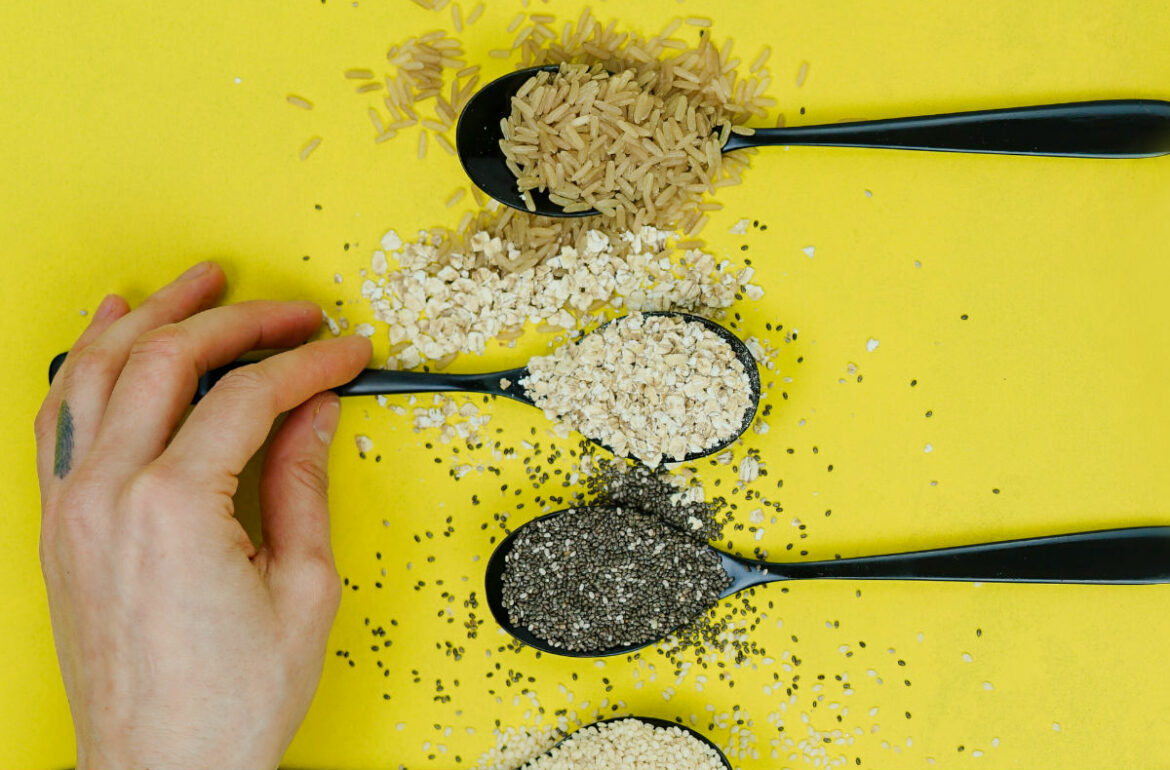
Everyone has their own opinions when it comes to feeding dogs. While some of those opinions may be based on fact, others are the result of inaccurate misconceptions.
Want to make sure that you are separating fact from fiction when it comes to the important topic of diet and nutrition for your dog?
Here are five common food myths, along with the real truth behind them…
MYTH 1: Grain-Free Diets are Better for Dogs with Allergies
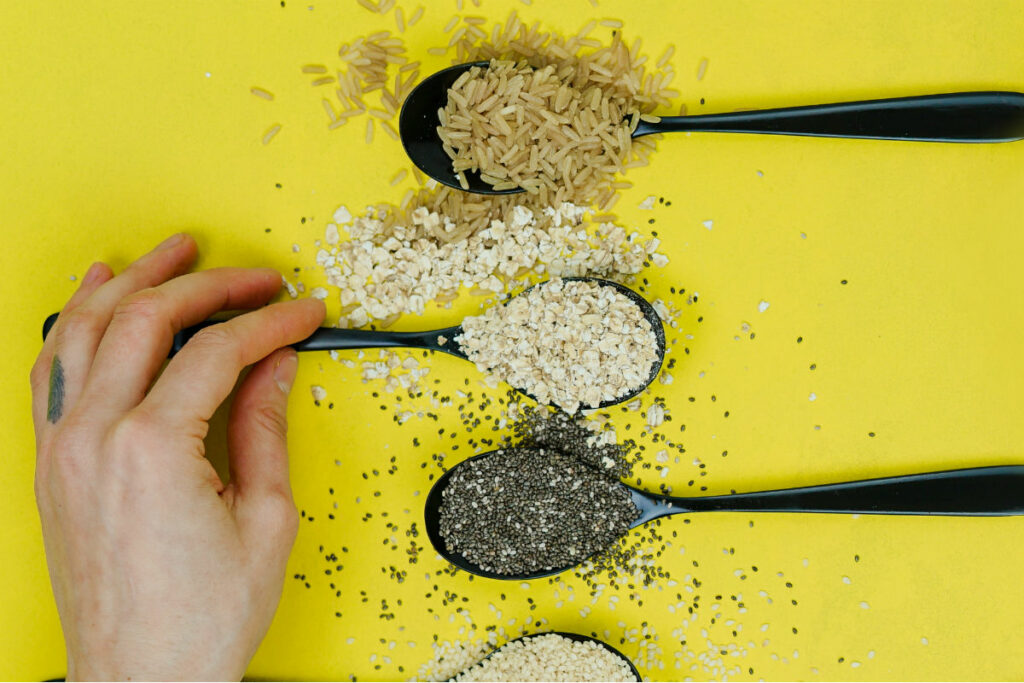
If you have a dog who is prone to allergies, you have probably spent quite a bit of time wondering if grain-free dog food is good or bad.
Well, let’s start at the beginning…
What is grain-free dog food?
Simply put, it is dog food that has been made without the use of grains.
Common grains often used in commercial dog food include the following:
- Wheat
- Corn
- Rice
- Barley
So, is a grain-free diet actually what a dog with allergies needs?
Not necessarily.
Allergies are caused by a hyperactive immune system. Did you know that about only 10% of dogs have true food allergies? While some allergies are undoubtedly related to food, most of them are triggered by environmental factors or gut related issues.
Plus, many grain-free foods are now under investigation for causing dilated cardiomyopathy (a serious heart condition) in dogs, making a grain-free diet something you may want to reconsider.
What should you feed instead?
Rather than going for a commercial grain-free diet, the best way to prevent allergies would be to feed your dog a balanced diet that contains as many fresh and whole foods as possible. This in itself will help to support and re-balance your dog’s immune system, seeing as 70% of the immune system is located in the gut.
For an extra immunity boost, you may also want to consider adding some probiotics into your dog’s diet.
MYTH 2: Kibble is Hard and Crunchy, Meaning it Can Help to Prevent Dental Disease in Dogs
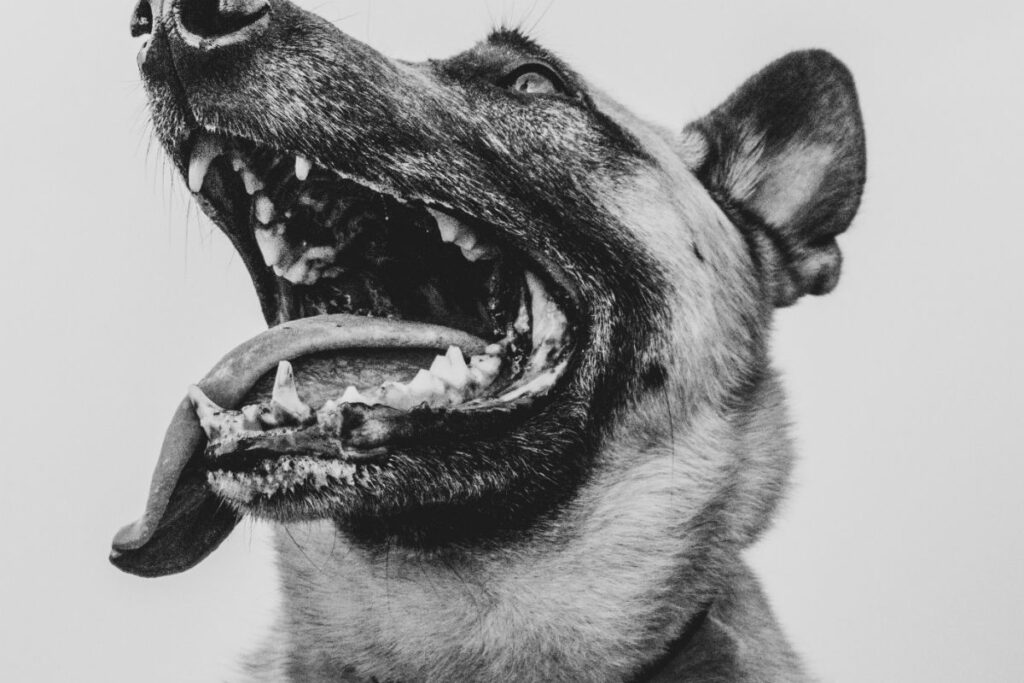
Did you know that kibble needs to contain at least 30% starch in order for it to hold its shape? If it didn’t, it would simply just fall apart.
While this starch does help to give kibble its crunch, don’t forget that starch contains sugar.
And what does the tartar and plaque on your dog’s teeth feed on?
Sugar!
Unfortunately, dogs don’t have the salivary amylase required to break down this starch and sugar, meaning that the sugars end up sitting on your dog’s teeth. This then leads to an increase in tartar and plaque, resulting in dental disease.
The way in which the sugars in a kibble remain on the teeth for an extended period of time also has an effect on the pH level in your dog’s mouth. It throws this off balance, encouraging bacterial growth, which, once again, contributes to dog dental disease.
The idea that crunching down on these sugar-filled foods will keep your dog’s teeth clean is just as ‘sensible’ as the idea of a human eating a packet of sugar-filled biscuits to keep their teeth clean!
Rather than relying on kibble to keep your dog’s teeth clean, you are best off opting for a method that has been scientifically-proven.
Thanks to the many specially-designed toothbrushes out there, dog teeth cleaning is now easier than ever to do yourself. Toothpastes are available in a variety of flavors and you can even try making your own homemade beef or chicken-flavoured toothpaste, making teeth-brushing an activity that your dog could grow to really love.
MYTH 3: High-Protein Diets Cause Kidney Failure in Dogs
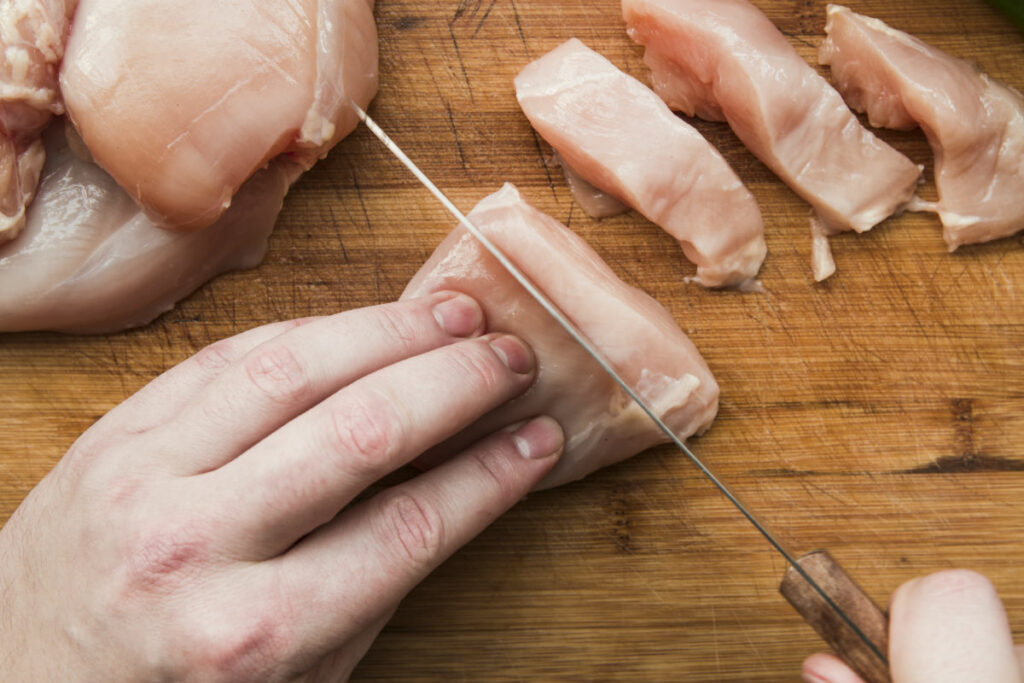
The myth regarding high protein diets and kidney failure in dogs is one that has been prevalent for quite a few years now. It doesn’t help that much of the literature out there supports this, meaning that vets do too, even though numerous studies have since proven this to be completely false.
In fact, those same studies also show that a low-protein diet can actually be detrimental to dogs suffering from renal problems.
How?
Because they lead to reduced kidney function, an imbalance of nitrogen in the body, and several other issues too.
Wondering what the best diet for dogs with renal failure is?
If your dog has kidney disease, his diet should be one that contains proteins in a natural form, without being overly processed. Whether this may be a protein that is raw, or one that has been gently cooked, the quality of the proteins fed is what matters most. This is something that you can have full control of when you feed a fresh dog food, compared to a commercial diet where you have no idea of the quality of protein that has been used.
Of course, the source of the proteins you feed makes a difference too…
Some proteins are easier for a dog to digest than others, and these are the ones that you should be feeding to a dog with kidney problems. Eggs and poultry, for example, are easier for a dog to digest than red meats.
MYTH 4: Diets That Contain Added Vitamins and Minerals are Better for Your Dog Than Ones That Don’t
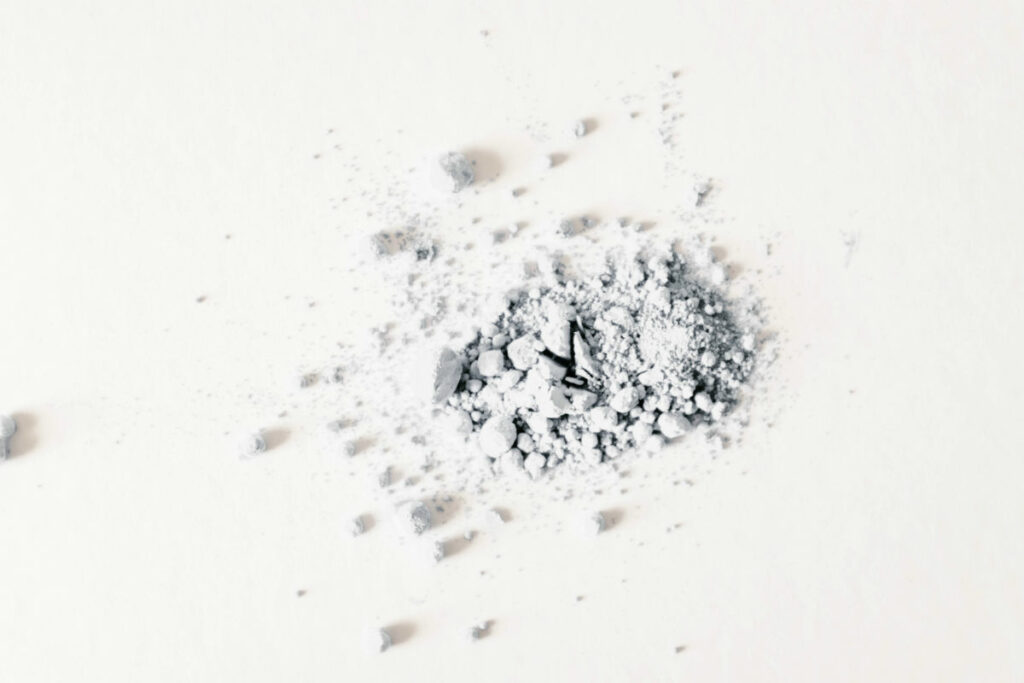
Every animal out there, including humans and dogs, needs vitamins and minerals in order for their bodies to thrive.
So, surely it only makes sense that a dog food that contains added vitamins and minerals would be better for your dog than one that doesn’t?
Unfortunately, this isn’t true…
The added vitamins and minerals in dog food are mostly synthetic nutrients that have been concocted in a laboratory. Dogs can’t absorb these in the same way that they make use of vitamins and minerals in their whole form, such as with those found in fresh foods. Whole foods contain the most natural form of vitamins and minerals, and these are much more bioavailable to your dog.
Plus, have you ever stopped to think about where those added vitamins and minerals in commercial foods actually come from?
They are often derived from sources that you definitely don’t want your dog consuming, such as:
- Coal tar
- Formaldehyde
- Petroleum ester
- Ammonia
Unfortunately, the sources of vitamins and minerals in dog foods are not displayed on the packaging, meaning that you will never quite know where they have come from.
You should also not forget that many of the recent dog food recalls have been due to their added vitamins and minerals.
Excess amounts of any vitamin or mineral can be extremely toxic to your dog, causing a variety of health issues. In the case of the recent recalls, the problem lay with excess vitamin D, which was sadly fatal for a number of dogs.
So, should you be avoiding dog foods that contain added vitamins and minerals?
Yes because, ideally, you should be feeding a more natural dog food whenever possible. Since these contain vitamins and minerals in their whole form, synthetic additives are not necessary. With a more natural diet, your dog will be receiving those vital nutrients naturally, in an easy-to-use form.
MYTH 5: Raised Feeders are the Best Way to Slow Down a Fast Eater
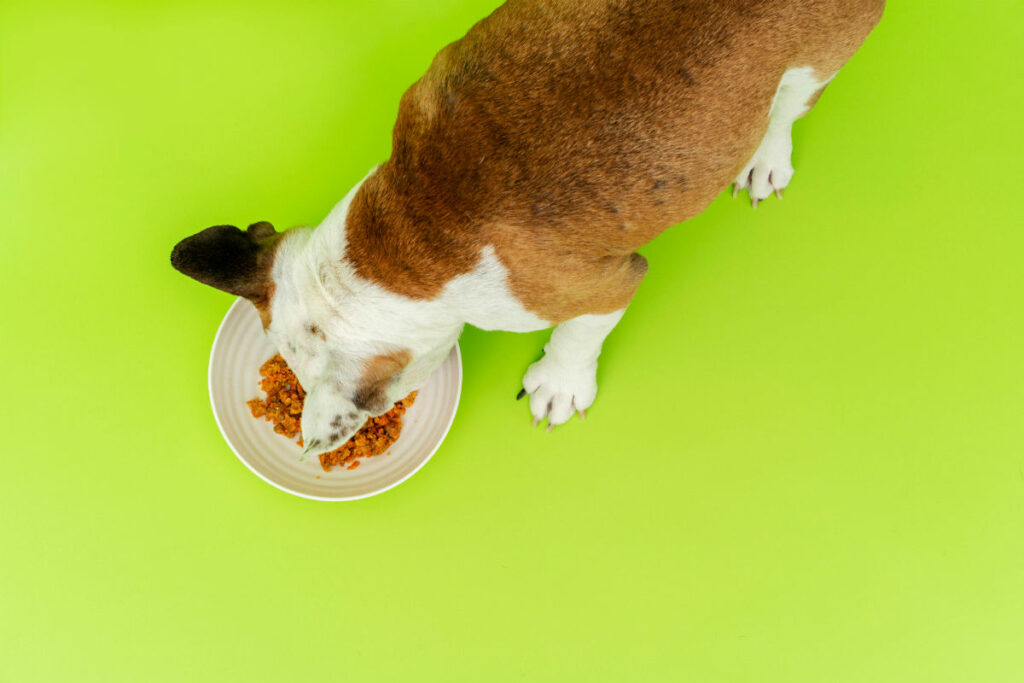
Does your dog tend to inhale his food, rather than taking his time with it?
If so, you have probably wondered…
Are raised feeders good for dogs who eat too fast?
Many believe that they are, but this isn’t quite true. There are actually quite a few cons to raised feeders for dogs…
A raised feeder basically elevates a dog’s bowl to knee or chest-height, rather than it being on the floor. Some studies have found a very strong link between raised feeders and bloat, which is a medical condition that is also known as gastric dilation volvulus.
It causes a dog’s stomach to twist, and, if not caught early enough, can quickly be fatal. While some breeds, especially those with deep chests, are more prone to bloat than others, the condition can affect just about any dog.
Plus, raised feeders don’t actually slow a dog down when eating. Due to the fact that the dog doesn’t have to bend down, it could actually lead to them eating even faster.
So, how can you encourage your dog to eat slower?
Slow feeders and anti-gulp bowls are the answer.
These can be found in a variety of designs, featuring everything from a spiral maze to raised “bumps” in the bowl, meaning that your dog would have to eat around these. Research has found that, when compared to a traditional dog bowl, a slow feeder can slow a dog down by up to ten times!
Slow feeders also reduce flatulence and provide mental stimulation for the dog while he is eating, making them a win-win for everyone!
Everybody wants the best for their dog, and diet plays a huge part in this. By taking the time to learn the difference between fact and fiction when it comes to the many food myths out there, you will be so much better equipped to feed your dog in the very best way possible.



